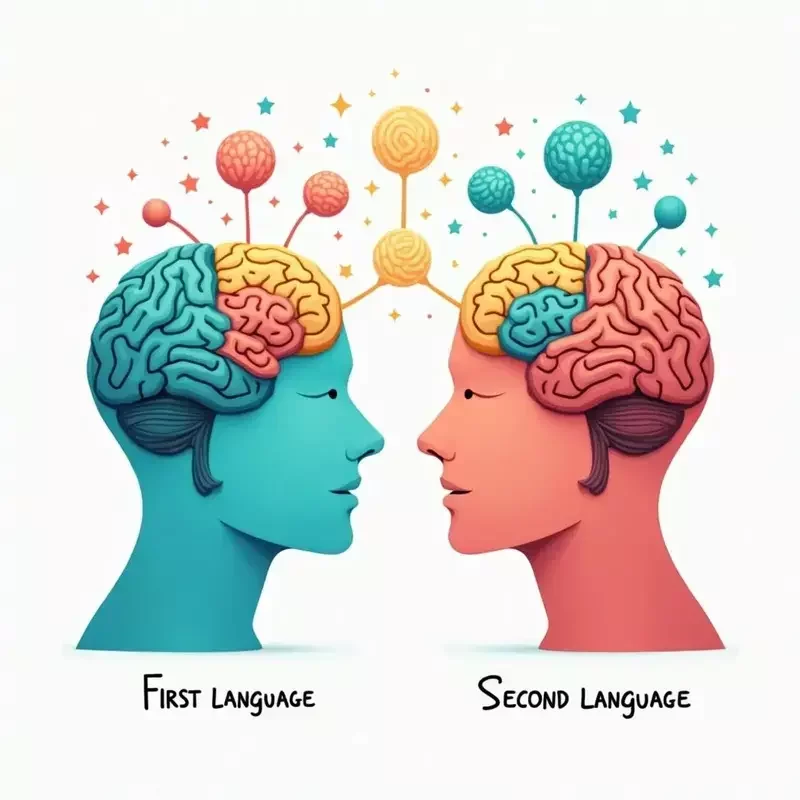Cognitive, Emotional, and Academic Benefits of Mastering One's Mother Tongue
In today's globalized world, being multilingual is a powerful asset. But before one can fluently speak many languages, it's essential to build a strong foundation in the first language—your mother tongue. Whether it’s Tamil, Hindi, Telugu, Malayalam, or Kannada, first language proficiency unlocks lifelong advantages. [UNESCO, 2008].
At Maadhyamik, we support regional language learning through intuitive keyboard tools and typing solutions that help learners stay connected to their roots.
Cognitive Benefits of Mastering the First Language
Language Enhances Brain Development
Children who become fluent in their mother tongue develop:
- Stronger memory and attention
- Better abstract thinking
- More effective problem-solving
A strong first language supports second-language learning. The brain builds on existing knowledge—and native fluency gives that initial base [Cummins, 1979; Thomas & Collier, 2002].
That’s why encouraging early writing and typing in the mother tongue is so valuable—it strengthens these cognitive skills in practical ways. Try our Tamil Typing Keyboard to help support cognitive growth through your native script.
Emotional Benefits – Language, Identity & Confidence
First Language Connects Us Emotionally
Our mother tongue is how we first express love, frustration, dreams, and identity. Children feel:
- A stronger sense of belonging
- Increased confidence in expressing ideas
- Emotional comfort in familiar sounds and words
Encouraging your child to speak their first language affirms their cultural identity and improves self-esteem [Skutnabb-Kangas, 2000].
Academic Success through Mother Tongue Instruction
Learning Is Easier in the Language You Understand
Studies show that early education in a child’s mother tongue leads to:
- Better classroom engagement
- Higher literacy and comprehension
- Long-term academic achievement
Children understand concepts faster when lessons are delivered in a language they deeply understand [UNESCO, 2016; Government of India NEP 2020].
That’s why providing students with tools to read and write in their mother tongue is so important—it supports these academic outcomes in real, everyday practice.
Explore our Phonetic Hindi Keyboard to help support Hindi learning in schools and at home.
The Multilingual Advantage Begins with One Strong Language
First Language Skills Help You Learn Others
Multilingualism is easier to achieve when the first language is strong. Skills such as grammar, sentence structure, and vocabulary transfer across languages.
Mastery in your mother tongue helps:
- Learn English or other global languages faster
- Think more clearly
- Maintain linguistic identity in a global world
[Heugh, 2011; Cummins, 2001]
Encourage daily practice in your native script while exploring other languages too. Start typing in any language using our Multi-lingual Phonetic Keyboard to support multilingual growth every day.
Conclusion – First Language First, Always
Your first language is your thinking tool, emotional compass, and educational base. In a multilingual country like India, we don’t have to choose between languages—we can build up from our roots.
At Maadhyamik, we’re committed to helping you stay fluent, expressive, and proud of your mother tongue.
Frequently Asked Questions
It builds cognitive skills, enhances academic performance, and strengthens emotional identity. [UNESCO, 2016]
How does learning in your mother tongue help with academics?
Children taught in their native language understand lessons better and perform well academically. [Government of India NEP 2020]
Can I still learn English well if I focus on my first language?
Yes! A strong foundation in your native language improves your ability to learn English and other languages more easily. [Cummins, 2001]
What tools help with native language typing?
Use phonetic or layout-based typing tools like:
- Tamil Keyboard Online
- Telugu Typing Keyboard
- Hindi Keyboard Download
Is it good to use different languages at home and school?
Yes, but ensure the first language is supported alongside other languages to maintain fluency and identity. [Skutnabb-Kangas, 2000]
References
- UNESCO. (2008). Improving the Quality of Mother Tongue-Based Literacy and Learning.
- UNESCO. (2016). If you don’t understand, how can you learn? Global Education Monitoring Report.
- Government of India. (2020). National Education Policy (NEP) 2020.
- Cummins, J. (1979). Linguistic Interdependence and the Educational Development of Bilingual Children. Review of Educational Research.
- Cummins, J. (2001). Bilingual Children’s Mother Tongue: Why Is It Important for Education?
- Thomas, W.P., & Collier, V. (2002). A National Study of School Effectiveness for Language Minority Students’ Long-Term Academic Achievement.
- Skutnabb-Kangas, T. (2000). Linguistic Genocide in Education – or Worldwide Diversity and Human Rights?
- Heugh, K. (2011). Theory and Practice – Language Education Models in Africa: Research, Design, Decision-making, and Outcomes.

